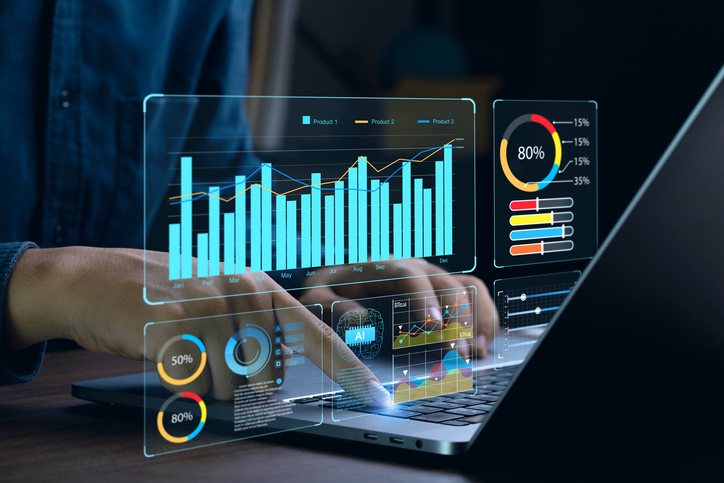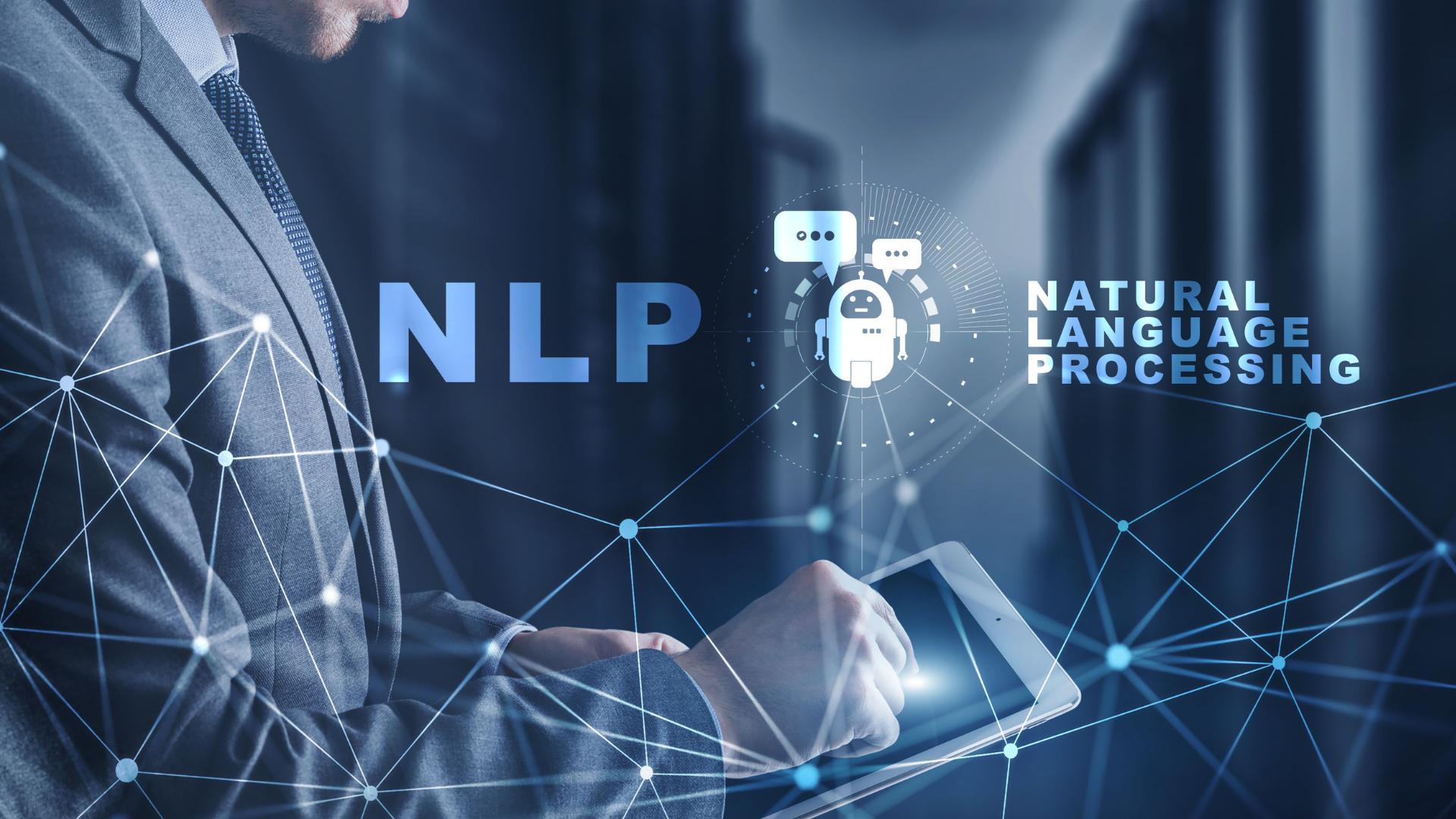9 ways to boost sales with artificial intelligence

Artificial intelligence, which used to be kept under wraps, is now finding its way into every aspect of marketing and sales. Algorithms are boosting customer knowledge, optimising actions and boosting sales results tenfold. However, in this technological craze, companies must be careful not to fall into a dehumanised approach, since the human factor remains the guarantor of a lasting customer relationship.
In this article, discover 9 concrete applications of AI to increase the sales process. As you read on, you’ll learn how these technologies are transforming salespeople’s work to boost results, while reinforcing the human-centric customer approach.
1 - Chatbots
Now a must-have AI solution, chatbots automate exchanges with customers on digital channels. Thanks to this technology, the most frequent queries receive an instant response, without requiring the intervention of an agent.
The chatbot understands the questions asked thanks to natural language processing (NLP), and responds according to the data in its knowledge base. The most relevant answers have been defined in advance by the marketing and customer service teams.
The chatbot then selects the appropriate response based on its analysis of the customer message.
This automation of simple, recurring queries offers multiple benefits :
- Saves time for the customer, who receives an immediate response, 24/7.
- Reduced workload for customer service teams, who focus on complex requests.
- Improved customer satisfaction thanks to instant processing.
- Personalise responses by refining algorithms according to customer profile.
Many sectors are now adopting chatbots to improve digital customer relations :
- In e-commerce, a chatbot on the website informs visitors about products and facilitates the purchasing process.
- In banking, it interacts with customers via the mobile app to provide account balance or block a card.
- In telecoms, it notifies users of their consumption or the evolution of their package.
- In the tourism sector, they chat on social networks to recommend activities or answer practical questions.
With chatbots, the customer experience becomes more efficient in many sectors. This AI technology optimises exchanges across all channels for 24/7 accessible customer service.
2 - Highly personalised recommendations

Product recommendation algorithms use artificial intelligence to offer each customer the most relevant references according to their tastes. This extreme personalisation boosts sales by facilitating the discovery of new, adapted products.
The recommendation engine exploits data such as products already consulted or purchased by the customer. It identifies their preferences and determines which references are likely to interest them, from a vast catalog.
AI goes even further, analysing customers’ overall behaviour. It detects correlations between products that would escape the human eye. In this way, the engine is able to suggest items that match the customer’s expectations, even if there is no obvious link with their habits.
Fine-tuning recommendations for each customer profile offers multiple advantages:
- Extremely personalised user experience on the website or app.
- Easier discovery of relevant new products.
- Conversion rate boosted by offering references in line with needs.
- Additional sales by encouraging the purchase of related products.
This ultra-personalised recommendation technology is successfully used by Amazon, Netflix and Spotify, among others. Whatever the sector, AI paves the way for tailor-made suggestions for each customer, to increase the average shopping basket.
3 - Predict sales using statistical models
AI predictive sales analysis enables accurate estimates of future sales volumes. Statistical models make robust projections based on past data and market trends.
These complex mathematical models incorporate multiple parameters. They take into account historical sales over several years to identify trends. New market share gains are also taken into account, as well as the constant evolution of demand and buying behaviour. The impact of seasonality is also taken into account, with sales of certain products fluctuating according to the time of year. Marketing and sales actions planned for the coming months are projected into the estimates. Product launches and discontinuations also influence projections.
Finally, the overall economic situation and its repercussions on the business sector are analysed. The combination of all these parameters makes it possible to establish solid forecasts thanks to the power of AI.
Accurate sales forecasting offers the following advantages, among others:
- Anticipate stock-outs and shortages by adjusting production and supply levels.
- Optimise team sizing to absorb anticipated peaks in activity.
- Adapt individual and collective objectives to anticipated trends.
- Allocate marketing and sales budgets to periods of maximum impact.
- Adjust the supply chain by alerting suppliers to future needs.
As you can see, predictive sales analysis using AI improves anticipation in many areas. Companies can look ahead with confidence and optimise their operations accordingly.
4 - Automatically target high-potential customers
Automatic targeting algorithms identify the profiles in your customer base most likely to buy your products or services. AI determines the prospects with the best potential to optimise sales actions.
The targeting engine exploits the behavioural data collected. It analyses each customer profile in detail:
- Interactions on the website ;
- Purchase history ;
- Reactions to marketing campaigns ;
- etc.
It deduces a propensity score, reflecting the likelihood of purchase or conversion. Profiles with the highest scores are automatically integrated into emailing, social selling or online advertising campaigns. Lower scores are worked on with “churn” algorithms to retain prospects before they leave the site for good, for example.
Optimising sales targeting with AI generates multiple benefits. Lead conversion is boosted by targeting mature and advanced profiles in the sales funnel. Sales productivity is boosted as teams focus exclusively on very high-potential leads.
Acquisition costs are also reduced, as only relevant prospects are targeted. Thanks to this refined targeting, the conversion rate increases throughout the entire customer journey.
Last but not least, ROI on campaigns is significantly improved thanks to the precision of targeting made possible by algorithms.
Thanks to automated targeting, teams can concentrate their efforts on high-potential prospects and customers, for greater efficiency.
5 - Segment your customer base finely

Intelligent AI segmentation automatically partitions the customer base into homogeneous groups. Each segment presents common characteristics and behaviours. This tailor-made segmentation makes it possible to personalise sales actions.
The segmentation algorithm exploits a wide range of data, including :
- Socio-demographic characteristics ;
- Purchase history ;
- Interactions on different channels ;
- Sensitivity to promotions ;
- Purchase frequency ;
- Average basket ;
- etc.
It identifies correlations that are imperceptible to humans, and brings out segments with similar profiles. Each group then benefits from highly personalised marketing and sales actions.
Fine-tuning tailored segments generates multiple benefits. First of all, campaigns and offers become fully adapted to the expectations of each segment, reinforcing their impact.
Secondly, the customer experience is enriched, with messages and content that are fully aligned with needs. In addition, additional sales opportunities emerge by activating specific levers for each segmented profile.
Last but not least, marketing efficiency increases significantly thanks to hyper-targeted, personalised sales actions.
Thanks to AI, segmentation becomes a dynamic and continuous process. Groups evolve and refine over time, for ever greater finesse.
6 - Data Visualisation for business management
Data Visualisation graphically renders sales and marketing data. Dashboards, interactive graphs and real-time dataviz facilitate business management.
Data Visualisation solutions exploit the massive volumes of data generated by sales and marketing activities. They synthesise this information in visual form to facilitate analysis by teams.
These tools enable you to :
- Visualise trends in sales, margins, average baskets, etc.
- Analyse performance by channel, campaign and product.
- Compare results with previous periods.
- Detect trends and correlations in data.
- Share key indicators within interactive dashboards.
Dynamic, real-time datavisualisation opens up a host of possibilities for making the most of information. First and foremost, it enables fine-tuned management of sales activity as a whole, with live tracking of all key indicators. This makes it possible to quickly adjust marketing and sales actions in the event of any deviation from objectives, or to seize a sudden market opportunity.
What’s more, the fluid sharing of this visualised data internally enhances responsiveness and collaboration within sales teams. Data Visualisation also promotes an intuitive and immediate understanding of strategic information. As a result, important decisions can be made on the basis of tangible data, not just intuition.
Thanks to these dynamic graphs and dashboards, sales staff have a synoptic view of their business.
7 - Extracting insights from textual data

Semantic analysis explores in depth the textual data generated by customers on a daily basis. Comments on social networks, product reviews, emails, telephone conversations, etc., abound in unstructured information.
Using automatic natural language processing (NLP), AI extracts meaning from these textual deposits. It detects trends, dominant sentiments and recurring topics.
Semantic analysis can be used in a multitude of ways. For example, it can be used to analyse customer verbatim in order to :
- Identify irritants and points of satisfaction in the customer journey.
- Identify customer needs and expectations.
- Detect new trends and emerging preferences.
- Analyse brand image and reputation on social networks.
- Monitor changes in the perception of products and services.
Semantic analysis reveals key insights within unstructured data. It opens the way to a refined understanding of customers, enabling us to better meet their expectations.
8 - Dynamic price adjustment
Price optimisation algorithms automatically adjust product prices in real time. AI integrates multiple parameters to set the ideal price at the right time.
Pricing algorithms sometimes also incorporate the notion of fair price as perceived by customers. By analysing historical data, AI identifies the acceptable price range for each reference to remain competitive while maximising margins.
Some pricing engines even go so far as to define a tailor-made price for each customer, based on his or her profile. They take into account price sensitivity, past purchases and brand loyalty, to optimise sales and margin opportunities for each profile.
AI will also continually refine its pricing algorithms thanks to machine learning. By testing millions of price/product/customer combinations and measuring the results, pricing engines become ever more efficient.
Optimisation dynamics can be applied at different timescales, depending on the strategy. Some brands readjust their prices several times a day to adapt to market fluctuations.
Thanks to this dynamic, individualised approach, AI paves the way for continuous price optimisation to maximise profits.
9 - Detect fraudulent transactions
Finally, AI is also able to automatically spot suspicious transactions and fraud attempts. Thanks to predictive analysis, algorithms identify anomalies in real time.
AI fraud detection solutions scan for numerous red flags, such as:
- Inconsistencies between payment data and customer profile.
- Unusual orders in terms of amount or quantity.
- Attempts to bypass identity checks.
- Use of a new credit card for a known customer.
- Connections from suspicious IP addresses.
By combining these different indicators through machine learning, statistical models define a risk score for each transaction. If the score exceeds a certain threshold, the order is blocked.
AI-enabled fraud prevention generates a number of benefits. Firstly, financial losses are significantly reduced, as fraudulent payments are blocked before finalisation. Similarly, unpaid invoices and disputes are drastically reduced.
The customer relationship is protected and perpetuated by avoiding conflicts linked to non-consensual transactions. In addition, compliance with current regulations is reinforced thanks to rapid detection of anomalies.
The user experience is also enhanced, as verifications remain discreet and minimise friction.
Finally, security in the face of growing cyber-attacks is strengthened, as attempts at fraud or intrusion are systematically thwarted by AI.
Conclusion
AI is revolutionising marketing and sales in depth, offering new performance levers. Algorithms are transforming customer knowledge, optimising targeting, stimulating engagement and boosting sales results tenfold.
With multiple use cases presented such as chatbots, product recommendations or price optimisation, we highlighted the considerable potential of AI throughout the conversion tunnel. These technologies boost sales if implemented strategically and consistently.
However, AI is not an end in itself. To generate sustainable value, it must be part of a global approach based above all on data and customer orientation. The key lies in the harmonious combination of human and machine in the service of operational excellence.
For the next few years, AI applications will be multiplying, immersing sales staff ever more fully in an augmented environment. The challenge will then be to place AI at the service of creating links, and not vice versa, to combine high-tech and high-touch within customer relations.
Want help with telephony for your business?
One of our experts can advise you:
Did you like this article? Feel free to share it with your network
Articles récents :
AI and sales: how to manage salespeople in the age of algorithms ?
← Blog Managing a sales team in the age of AI Artificial intelligence is shaking up the practise …
How do you draw up an effective sales prospecting plan?
← Blog How do you draw up an effective sales prospecting plan? Sales prospecting is one of the …
What is VoIP and how does it work ?
← Blog What is VoIP and how does it work ? VoIP is a new IP-based communication system …



